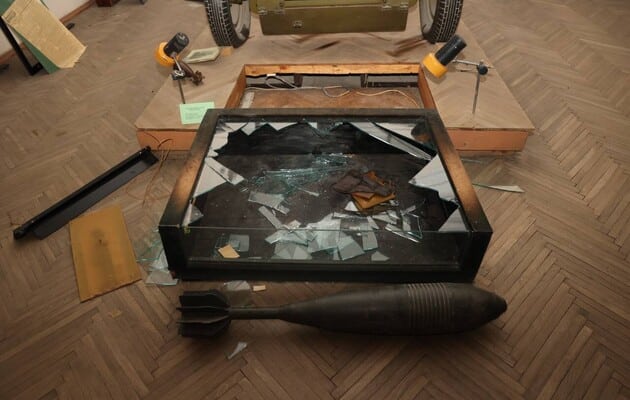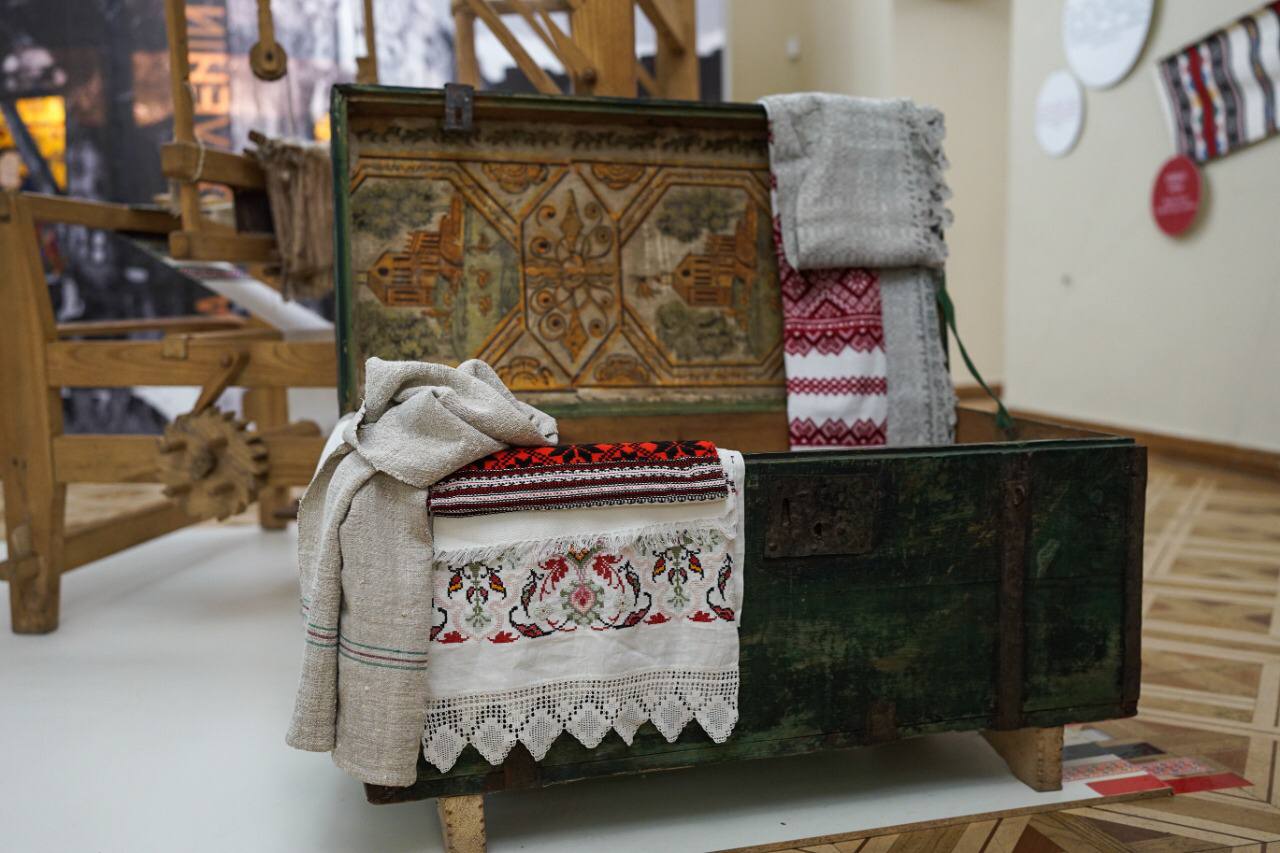Culture cannot be separated from politics. The war that Russia unleashed against Ukraine in 2014 was not just about territories and human lives — it was a war against Ukrainian culture. This war has shattered the iron curtain between Ukraine and the world at a fearful cost. And our country has captivated not only with its courage but also with its unexpectedly rich culture rooted deep within.
The ZN.ua project, created with the support of the Ministry of Culture and Information Policy of Ukraine, is dedicated to how Ukrainian museums, theaters, libraries, and nature reserves live (or rather survive) in the face of a full-scale invasion.
Museums during wartime
Museums are institutions that preserve memory by safeguarding its material carriers. Therefore, by destroying the history of a nation and depriving it of its cultural heritage, the aggressors disrupt the cultural balance of all humanity. In Ukraine, there are over two thousand museums, each with different levels of subordination — national, regional, and municipal.
“Today, museums are primarily institutions that perform functions of preservation, interpretation, and communication.” However, as museum professionals say, during the war, preservation takes the forefront because it is “tested” by evacuation, shelling, and looting,” said the acting director of the Bogdan and Varvara Khanenko National Museum of Arts, Yuliya Vaganova, during a recent discussion on “Museums during wartime,” which was interrupted by an air alarm.
Evacuation
The issue of evacuating museum treasures sparks the most discussion, but many aspects remain undisclosed. There are positive examples of successful evacuations, and there are quite a few of them. However, due to security considerations, information regarding the evacuation, especially of cultural treasures, is not publicly disclosed because, in accordance with the decree of the President of Ukraine “On the introduction of martial law in Ukraine” dated February 24, 2022, the country has implemented measures under the legal regime of martial law.
Yes, in Ukraine, there was no mechanism for preventive evacuation, and there is no such term in the current legislation. Evacuation involves a series of measures and is a resource-intensive process. In the case of an armed conflict, this mechanism is directly activated with the introduction of martial law.
However, despite all the challenges, Ukraine managed to carry out the largest evacuation of museum collections since World War II.
The resolution of the evacuation and preservation of museum collections, by the current legislation, involves the synergy of the Ministry of Culture and Information Policy of Ukraine, local administrations, local self-government bodies, cultural institution directors, security forces, law enforcement agencies, and the public.
See also: Role of theatrical art during wartime
Ukraine has begun to improve and modify legislation to enhance the mechanism of museum evacuation during martial law.
Rocket shelling
On April 25, 2023, a Russian S-300 missile destroyed the Kupiansk Local History Museum in the Kharkiv region and claimed the lives of the museum’s director, Iryna Osadcha, and another museum employee, Olena Vodop’yanova. During the six-month occupation, the director and her team managed to rescue the museum’s collections, which included historical documents, rare photographs, archaeological artifacts, ethnographic items, and numismatic collections.
All photos provided by ZN.ua
This horrific episode in Kupiansk is one of the countless Russian crimes against humanity and Ukrainian culture. In the early months of the great ar, Russian troops burned down the historical and local history museum, where Maria Prymachenko’s paintings were preserved. The Russian army deliberately destroyed the National Literary and Memorial Museum of Hryhorii Skovoroda in the village of Skovorodynivka on the occasion of the 300th anniversary of the genius philosopher. And on October 10, 2022, when the center of Kyiv was shelled, all the museums near Shevchenko Park were affected: the Khanenko Museum, the National Museum Taras Shevchenko, the Kyiv Picture Gallery, as well as other museums located on the streets adjacent to the epicenters of the explosions.
In total, according to official statistics, over 60 museums and galleries have been affected since the beginning of the invasion (22 — destroyed; 41 — damaged), with the majority being in Donetsk (37%) and Kharkiv (11%) regions.
Lootering
During the full-scale invasion, Russian soldiers looted dozens of museums, including those in Mariupol, Melitopol, and Kherson, which were occupied in the early days of the war. They looted tens of thousands of art objects from Ukraine, including artifacts dating back several thousand years.
For example, the city council of Mariupol, in exile, stated that Russian forces had looted over two thousand exhibits from the city’s museums.
“According to preliminary estimates by experts, the scale of looting in temporarily occupied territories is much larger. We can only speak with certainty about the number of looted objects when our territory is liberated. Once access was gained to the damaged museums in Kherson after its liberation, evidence of crimes against cultural heritage in the city was documented, including with the assistance of international experts. This evidence was then transmitted to UNESCO to prevent the illegal trafficking of museum exhibits and to facilitate the eventual return of the looted objects to their rightful homes,” noted the Minister of Culture and Information Policy of Ukraine, Oleksandr Tkachenko.
International experts unanimously acknowledge that this is the largest looting of art objects since World War II. The synchronization of all major registers of crimes against Ukrainian culture is currently underway. According to preliminary estimates by the Ministry of Culture and Information Policy of Ukraine, the looting and destruction of cultural objects have caused damages amounting to hundreds of millions of euros.
Life goes on
Museum life resumed from April-May of last year wherever possible. For example, the National Museum of the History of Ukraine was one of the first to reopen after the liberation of the Kyiv region in World War II. Its director, Yuriy Savchuk, had already conceived the exhibition Ukraine: The Crucifixion in February 2022, which was opened on May 8, 2022. It became the world’s first museum permanent exhibition about the war, created during the same war, which is constantly updated in Ukraine and has been showcased and continues to be showcased in dozens of countries worldwide.
Here are more examples of the restored work of museums in Kyiv: The National Museum Taras Shevchenko managed to organize five exhibition projects almost simultaneously during the summer of 2022. Despite the shelling, the Khanenko Museum continued to invite visitors to its exhibitions, discussions, and concerts even during winter blackouts.
Museums in Kharkiv also inspire particularly the Kharkiv Literary Museum, which, from the early weeks of full-scale aggression, traveled with exhibitions to the western part of Ukraine. Despite the fact that this city on the border with the aggressor state cannot inherently be peaceful, the museum resumed offline operations in the spring of 2023. As noted by its director, Tetiana Pylypchuk, they are currently actively preparing for the traditional Night of Museums event, have opened an exhibition of war posters, and are getting ready to open the Antytext exhibition in Lviv. Another example is the Odesa Fine Arts Museum, which in late January of this year launched the resonant exhibition series Languages of War. Its goal is to preserve and transmit the art of wartime, providing a stimulus for reflections on the circumstances in which the country found itself over a year ago.
Specific ways
- Witnesses of cultural heritage destruction from all regions of Ukraine can submit photo or video evidence to the Ministry of Culture and Information Policy through the designated resource.
- In August 2022, the Ministry of Culture and Information Policy established a special account for collecting funds to rebuild the destroyed cultural objects. You can support the project through the provided link.
- The project “Electronic registry system of the museum fund of Ukraine,” being developed by the Ministry of Culture and Information Policy with the support of the Ministry of Culture and National Heritage of Poland, aims to create an electronic registry to determine the status and location of each object in the state-owned part of the museum fund. It will facilitate the transition to electronic inventory and automate service provision.
- The National Agency for Prevention of Corruption and the Ministry of Culture and Information Policy have begun joint work within the Art Sanct Task working group. The goal is to track violations of sanctions in global art market operations and prevent the illegal trade of artworks and antiques that were stolen by occupiers in Ukraine during the war.
Originally posted on Zn.ua. Translated and edited by the UaPosition – Ukrainian news and analytics website



